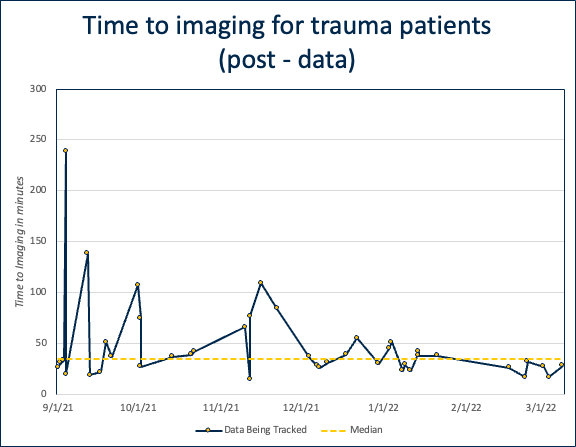Emergency Medicine: Quality Improvement
Emergency Medicine 10
461 - Implementing a Quality Improvement Training Tool for Trauma Codes in a level 1 Pediatric Emergency Department?
Sunday, April 30, 2023
3:30 PM - 6:00 PM ET
Poster Number: 461
Publication Number: 461.309
Publication Number: 461.309
Kelly Levasseur, Children's Hospital of Michigan, Detroit, MI, United States; Stacey M. Sears, C.S. Mott Children's Hospital, Novi, MI, United States
- KL
Kelly Levasseur, DO, MHA (she/her/hers)
Medical Director
Children's Hospital of Michigan
Detroit, Michigan, United States
Presenting Author(s)
Background: TeamSTEPPS is a teamwork system developed over 20 years ago by the Agency for Healthcare Research and Quality (AHRQ) to improve collaboration and communication first utilized in the army and adapted to healthcare settings. This program uses teamwork and communication to improve patient safety and for the prevention and mitigation of medical errors and of patient injury and harm. At our level 1 pediatric emergency department (ED), we aimed to improve the management of trauma patients by implementing TeamSTEPPs.
Objective: To determine if in trauma patients length of stay (LOS) and time to imaging would decrease after implementation of teamSTEPPS.
Design/Methods: We performed chart reviews on all trauma patients six months prior to March 2019 (pre data) and six months after January 2022 (post data) and included all level 1 and 2 trauma patients who had CT scans done in the ED. We initiated TeamSTEPPS training with a master class of 10 physicians and 10 nurses taught by a registered master class trainer. At the end of the training, we collectively decided on two initiatives which would have the highest impact on quality care and patient safety in trauma patients. The first initiative implemented closed loop communication for the trauma assessment process and the second made formal spots for each provider at bedside, no one else was allowed at bedside unless invited. All faculty was trained in the initiatives and periodic trauma code review was performed and feedback given to physicians about their closed loop communication.
Results: We had a total of 133 level 1 and 2 trauma patients. 25 patients in the pre group and 42 in the post group met inclusion criteria. Average age was 6.7 years and 8.56 years respectively with male and Black predominance in both groups. Average length of stay in the ED was 4 hours and 13 minutes in the pre group and 4 hours and 35minutes in the post group. The average time to imaging was 64 minutes (range 13-311 minutes) in the pre group and 47.6 (range 17-239 minutes) minutes in the post group.
Conclusion(s): We were able to decrease our time to imaging by 17 minutes; however, our LOS increased by 22 minutes. This likely could be because of high occupancy in the hospital and nursing shortages resulting in fewer inpatient beds. The time to imaging decreased significantly and there were no other changes in trauma evaluations during this time. This change could be due to our TeamSTEPP initiatives using closed loop communication and less crowds at the bedside allowing for efficient trauma evaluations.
.png)

